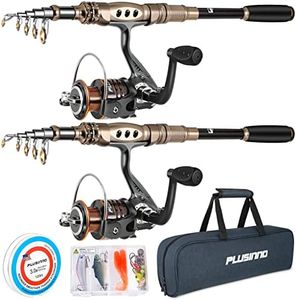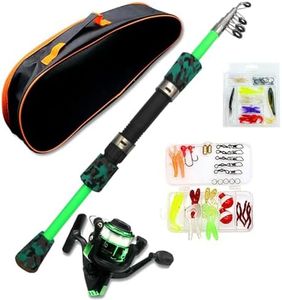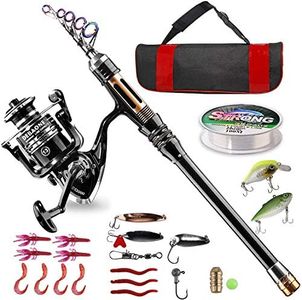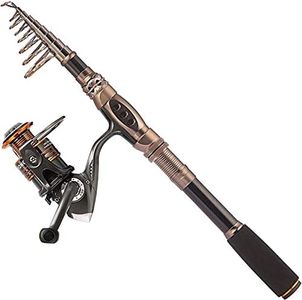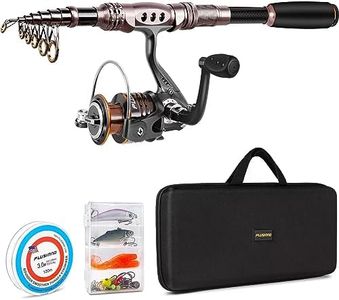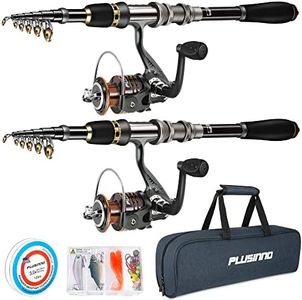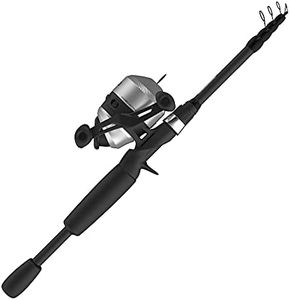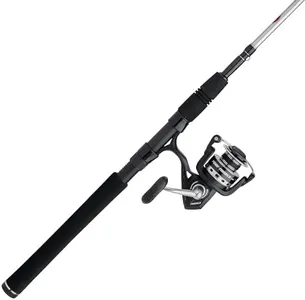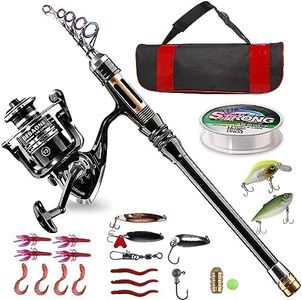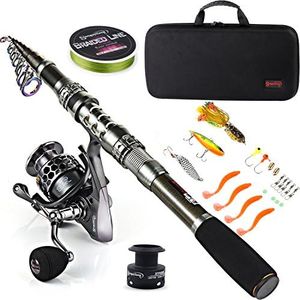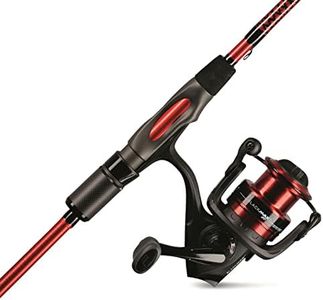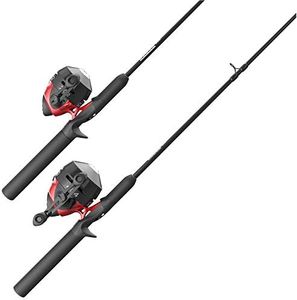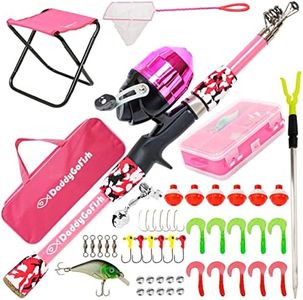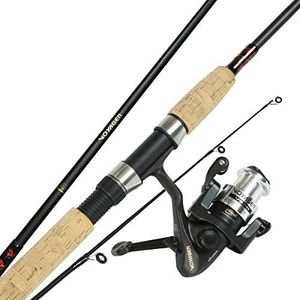We Use CookiesWe use cookies to enhance the security, performance,
functionality and for analytical and promotional activities. By continuing to browse this site you
are agreeing to our privacy policy
10 Best Fishing Pole For Beginners
From leading brands and best sellers available on the web.Buying Guide for the Best Fishing Pole For Beginners
Choosing a fishing pole as a beginner should focus on finding something that's easy to use, comfortable to handle, and well-suited for the types of fishing you want to try. Start by thinking about where you'll be fishing most often—lakes, rivers, or the sea—and what size of fish you're hoping to catch. These choices will help steer you toward a setup that's not too complicated to learn on, yet versatile enough to use as your skills grow. Remember, a good beginner pole makes fishing enjoyable and helps you learn the basics without frustration.Rod LengthRod length refers to how long the fishing pole is from end to end. This matters because longer rods can cast farther and give you more leverage when fighting a fish, but they're also harder to control—especially for newcomers. Shorter rods offer better control and are easier to manage for close-by fishing spots. If you're just starting out, rods in the 6 to 7-foot range strike a nice balance; they're long enough to learn with but not so long that they become unwieldy.
Rod PowerPower describes how much force it takes to bend the rod and is usually labeled from ultra-light to heavy. This is important because it tells you what size and type of fish the rod can handle. Lighter power rods are good for smaller fish and lighter lines, while heavier power rods are built for larger fish. Beginners often do best with a medium or medium-light power rod, which covers a wide range of fishing situations and is forgiving enough if you make mistakes.
Rod ActionAction relates to where along its length the rod bends when pressure is applied. Fast action rods bend near the tip, while slow action rods bend closer to the handle. A rod with a moderate or medium action is best for beginners because it provides a balance between sensitivity and ease of use. It’s versatile, making it great for learning different methods and types of fishing without making things too complicated.
Rod MaterialFishing rods are commonly made from graphite, fiberglass, or a mix of both. Graphite rods tend to be lighter and more sensitive, helping you feel when a fish bites, but they can also be more fragile. Fiberglass rods are tougher and more forgiving, making them great for beginners because they can handle rougher treatment. A composite rod, which combines both materials, gives you the best of both worlds and is a solid choice if you want something durable yet responsive.
Reel TypeThe reel is the part that holds the fishing line and helps you cast and wind it back in. For beginners, the two main options are spinning and spincast reels. Spinning reels are easy to learn, less likely to tangle, and work well in most situations, making them a popular choice for newcomers. Spincast reels are even simpler and almost tangle-proof, ideal if you want ultimate ease of use. Choose based on your comfort: spinning reels are a bit more versatile, while spincast reels are nearly foolproof.
Rod HandleThe handle is what you grip when casting and reeling in. They can be made from cork or EVA foam, with each material offering a different feel—cork feels warm and is comfortable, while EVA foam is durable and less expensive. For beginners, comfort is key. Try holding different handles if you can, and go for what feels good in your hand, since this will make learning to fish more enjoyable.
